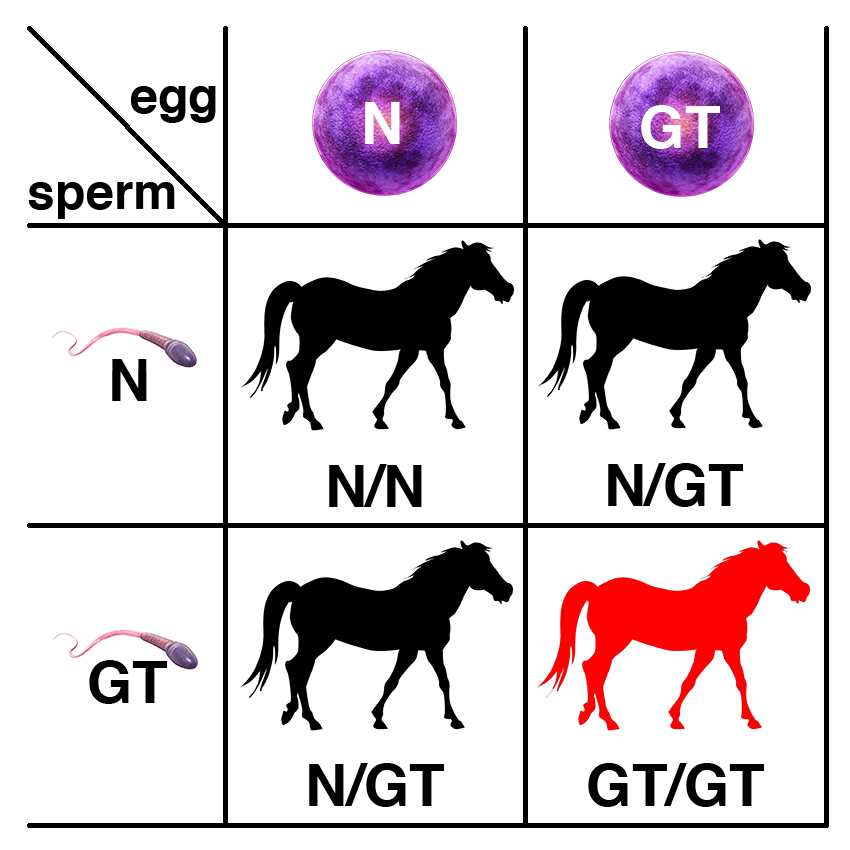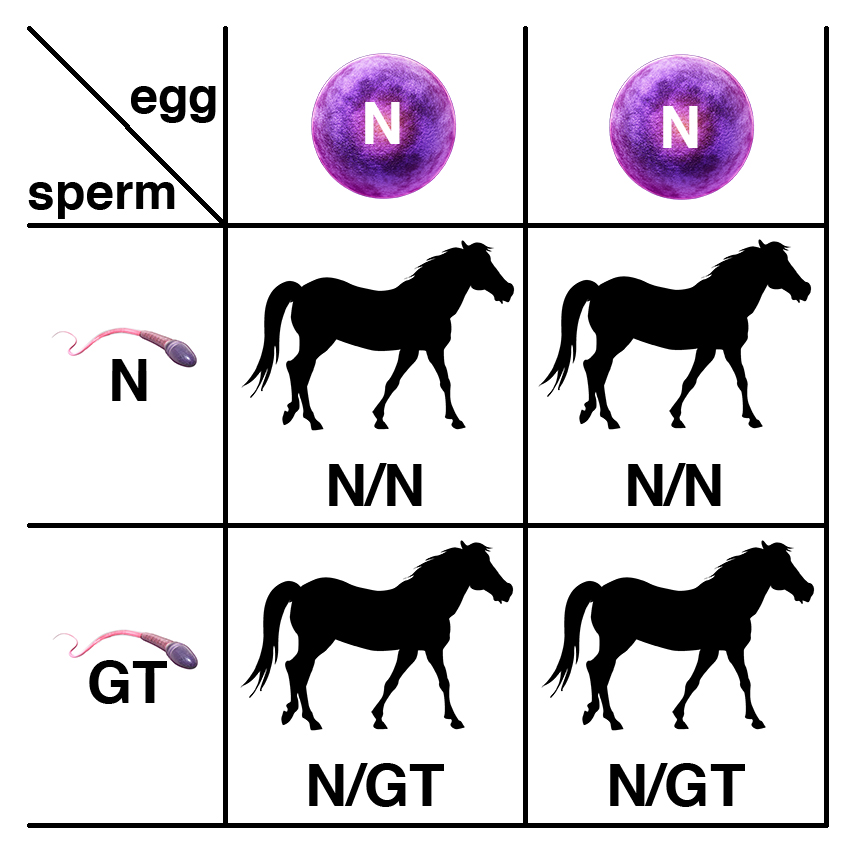Thrombasthenia
Summary
Glanzman Thrombasthenia is an inherited bleeding disorder marked by a failure of platelet aggregation. Affected horses bleed excessively and show a lack of clotting. There is no effective treatment.
Date of Last Update: 08/02/2016
Results
Understanding the Results
Results of the genetic test for Glanzman Thrombasthenia are presented as shown below.
| Glanzman Thrombasthenia (GT) | ||
|---|---|---|
| N/N | Clear | This horse tested negative for GT. |
| N/GT | Carrier | Both the normal and mutant alleles are present. This horse is positive for the GT mutation but will not develop symptoms. |
| GT/GT | Affected | This horse carries two copies of the GT mutation and will develop the disease. |
Disease Name and Genes
Two alleles of the gene encoding platelet glycoprotein IIb, Integrin, Alpha-2B (ITGA2B), are associated with Glanzman Thrombasthenia.
Glanzman Thrombasthenia results from a G to C substitution in exon 2 of ITGA2B that causes the replacement of an Arginine (R) with a Proline (P) at codon 72 (ITGA2B-R72P).
Glanzman Thrombasthenia also results from a 10 base-pair deletion that spans the splice site between exon 11 and intron 11 identified in a Quarter Horse. This mutation is predicted to result in a lack of splicing of intron 11 and inclusion of a termination codon 50 bp downstream of the deletion. Lack of expression of this mRNA is most likely the result of nonsense-mediated decay.
Inheritance
Glanzman Thrombasthenia resulting from mutations in the ITGA2B gene is inherited as a recessive trait. The recessive allele is here abbreviated as GT, with the dominant wild-type allele abbreviated as N.

Carriers of the recessive allele (N/GT) have no symptoms of the disease. If two carriers are bred, each foal has a 25% chance of having two copies of the normal allele (N/N), a 50% chance of being a carrier (N/GT), and a 25% chance of being affected (GT/GT).

If a carrier of the recessive allele (N/GT) is bred to a normal horse (N/N), each foal has a 50% chance of having two copies of the normal allele (N/N) and a 50% chance of being a carrier (N/GT).